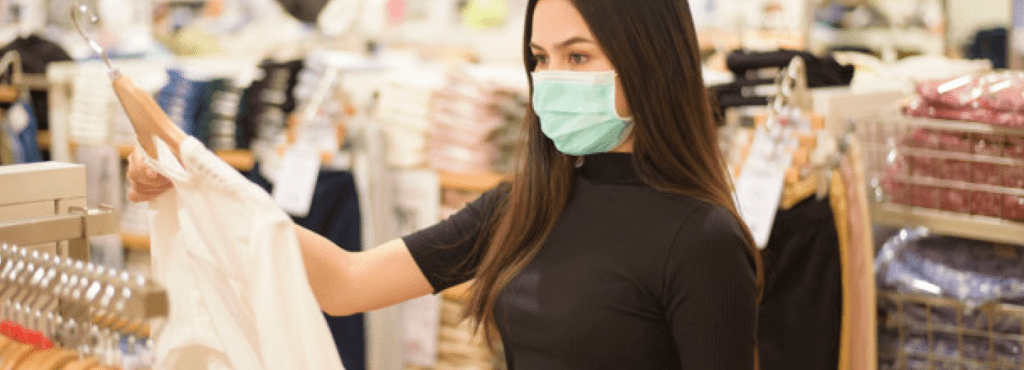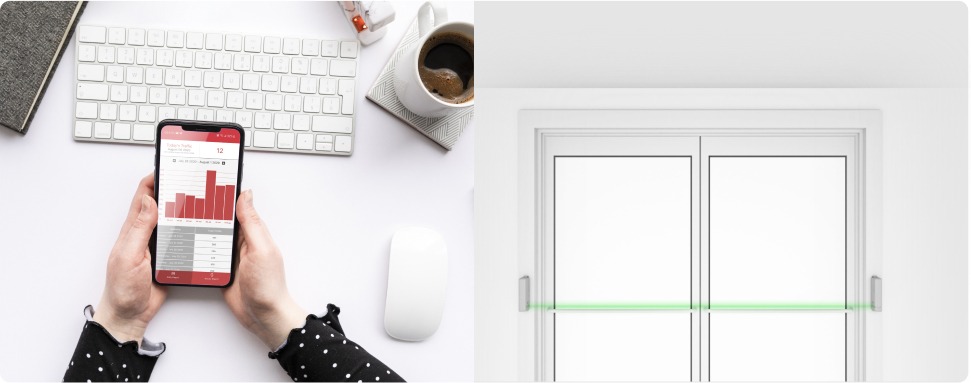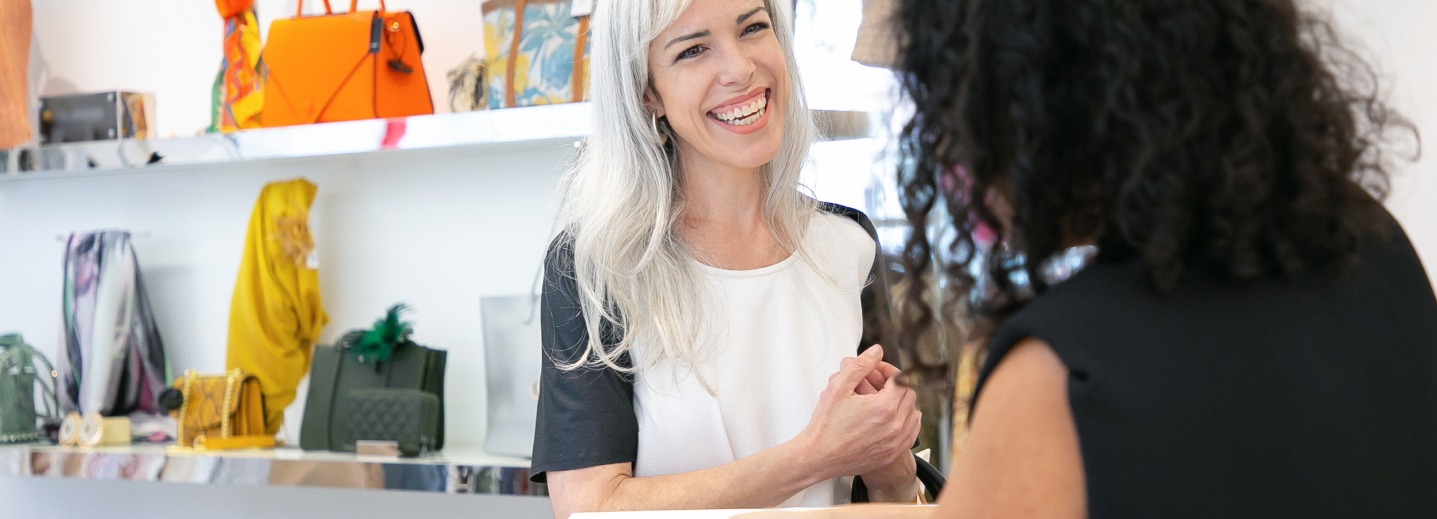The vaccination effort is going strong and offers a much-needed influx of hope. Still, we haven’t seen the end of the COVD-19 pandemic and several questions remain, quite simply, impossible to answer. For now, even the most knowledgeable industry experts resort to hypotheses when it comes to the economic impacts and the recovery rate for apparel retailers.
So, as a fashion retailer in 2021, how do you even begin to map out your strategy?
Below, some food for thought. Also: key pillars to help anchor your decision-making process in 2021.
1. A slow or rapid recovery for fashion retailers?

What to expect from retail customers.
As time passes and people feel more secure to leave their homes—and more confident about their finances—shoppers will return to apparel stores, and sales will grow. What’s uncertain is the rate of recovery. Will it be a radical surge or a slow and progressive increase? What’s clear is that we won’t be seeing 2019 sales numbers any time soon1.
It’s safe to assume that people are anxious to return to pre-COVID life habits and hassle-free leisure time. This ‘return to normal’ will vary significantly from one group of consumers to another, however. Indeed, the return of shoppers to fashion apparel stores won’t depend solely on resolving health concerns.
For one, even if 100% of the population is inoculated, not everyone will have the disposable income to go shopping. Loan and mortgage deferrals will come to an end, so will government subsidies. Many will face job loss and financial burden. In contrast, others with consistent revenue streams may have saved during the pandemic.
But that’s not all. Beyond feeling safe and having the income to spare, it remains to be seen if the pandemic has generally affected consumers’ aspirations and shopping behaviour.
Will we discover a new kind of fashion shopper?
Experts agree that working from home is here to stay. To what extent? We don’t know just yet.
What is clear is that working from home changes the way people dress. To say that everyone is now following a “from the waist up” dress code would an exaggeration. But you get the picture: there is less need for work-attire shopping. Will that increase fashion purchases in other categories, like leisure, wellness and sports gear? Fashion retailers should pay close attention to this new variable.
Having more employees return to offices will drive the return to apparel stores. However, with COVID, many consumers turned to online purchases. How will this affect shopping patterns once the pandemic is truly behind us?
It’s also important to remember that fashion and style reflect a person’s mindset as well as the social climate. Even if people return to work in droves, will we necessarily see a significant uptick in apparel shopping? Will the perennial fashionista be excited to flaunt new purchases, or will they feel the need to be low-key, postponing the return to pre-Covid shopping habits?
2. Why Agility and Experience are key
for fashion retailers in 2021.

The need for a compelling in-store experience
Hoping that people casually strolling down a street or shopping mall alley will stop by a store won’t cut it. Fashion stores that will recover—and do so faster than others—will be those that genuinely embrace the customer-experience mindset.
As a fashion retailer, how can I...
![]() Get people to pay attention to my brand
Get people to pay attention to my brand
![]() Provide my customers with real added value
Provide my customers with real added value
![]() Inspire them to come back for more
Inspire them to come back for more

Learning to deal with current market tensions
In 2021, fashion retailers will have to deal with conflicting factors to carry out their decision-making process.
Without a clear outlook on customer demand, it seems logical to keep inventory levels low, right? However, if you don’t have what consumers are looking for while they are in the store, they’ll shop elsewhere. Similarly, instincts might tell you to stay prudent in terms of staffing. However, you’ll need the correct number of quality employees to convert customers.
Or, are customers buying more because you’re appropriately staffed and offer a compelling customer experience?
Pandemic or not, several retailers struggled with these questions over the years. Before COVID-19 hit, the strongest performing retailers were, however, the ones that grabbed the bull by the horns; in the face of eCommerce growth, they consistently and proactively rose the bar for the in-store shopping experience, fostering a sense of belonging and providing added value unique to their brand. In all likelihood, COVID will increase the divide between retailers that stick to the business-as-usual approach and those who embrace new strategies to secure profits in the retail fashion industry.

With the pandemic, many shoppers were forced into online shopping. They experienced its alimitations, but also its convenience. Logically, what was true before COVID-19 will hold even more weight in the near-future: give consumers a reason to visit your store.
What can a fashion retailer do to:
![]() Understand its market
Understand its market
![]() Support decision-making better
Support decision-making better
![]() Seize opportunities
Seize opportunities

3. Focus on store-specific retail insights

During the last decade, retailers, in general, have been dealing with and learning to adapt to a changing landscape. COVID has taken the retail industry shake-up to a new level. Some say it’s even accelerated the market penetration of eCommerce by up to five years.
So, with such drastic changes unfolding and with little to no possibility for industry-wide predictions for 2021, what can a fashion retailer do to understand its market, support decision-making better and seize opportunities?
Part of the answer lies in the question.
Think, for a moment, about how technology is improving personal health control. On the one hand, today’s professional equipment offers analysis levels that help fine-tune diagnostics and treatments instead of generalizing. On the other, people themselves can monitor their health condition and betterment through a host of personalized devices.
The same holds for a fashion retailer: by gathering and observing data on a more micro level—as opposed to market-wide numbers and trends—fashion retailers can significantly improve decision-making and achieve the kind of agility required by the ‘New Normal’ reality.
Working with information that’s tied to a store’s specific reality allows for much more effective actions. Yes, you need to pay attention to your sales numbers. Strategic retailers, however, will also pay attention to another crucial metric: their footfall traffic.
Capturing foot traffic for a store—or several locations—can, for instance, reveal shopper traffic trends for your specific locations or area. This insight level allows you to react much more quickly and improve stocks and staff management markedly.
Moreover, your foot traffic numbers are the missing link that allows you to assess the elusive notion of experience. You can’t measure experience itself. But you can measure the metrics that depend on it, namely your conversion rate.
Are you making the most of your in-store traffic?
When people enter your store, are they buying and at what rate?
Incorporated in our T.M.A.S. software and people counting technology is Storetraffic’s exclusive focus on the Retail Equation, to help you understand and unlock your store’s potential. It combines your foot traffic numbers with your sales number to deliver the most precise picture of your store’s performance, even allowing you to experiment with different “what if” scenarios to learn how you could improve sales.
Just like a personal health device, it zeroes in on store-specific variables to drive your business. Scheduling a free demo with a Storetraffic expert is the best way to understand how people counting technology can work for your store and generate profitability.
There’s never been a better time to take charge of your business.
Until further notice, you can forget about “must-have fashion” (Forbes.com — Jan 2021). As the recovery process unfolds—be it a slow or fast recovery—fashion industry retailers will need to double down on customer experience to seize every opportunity.
My prediction: retailers that sharpen their selection of products and invest towards providing customers with compelling in-store experience will be those that recover quicker and secure their place in the market. Businesses that stick to tired window displays and leftovers 2019-2020 trends, waiting until the pandemic is over to stock and staff appropriately, will likely regret it.
Be ahead of the curve and take charge of your business. Provide customers with compelling reasons to shop at your store and leverage the tools that allow you to assess and improve your business’s specific performance consistently.










